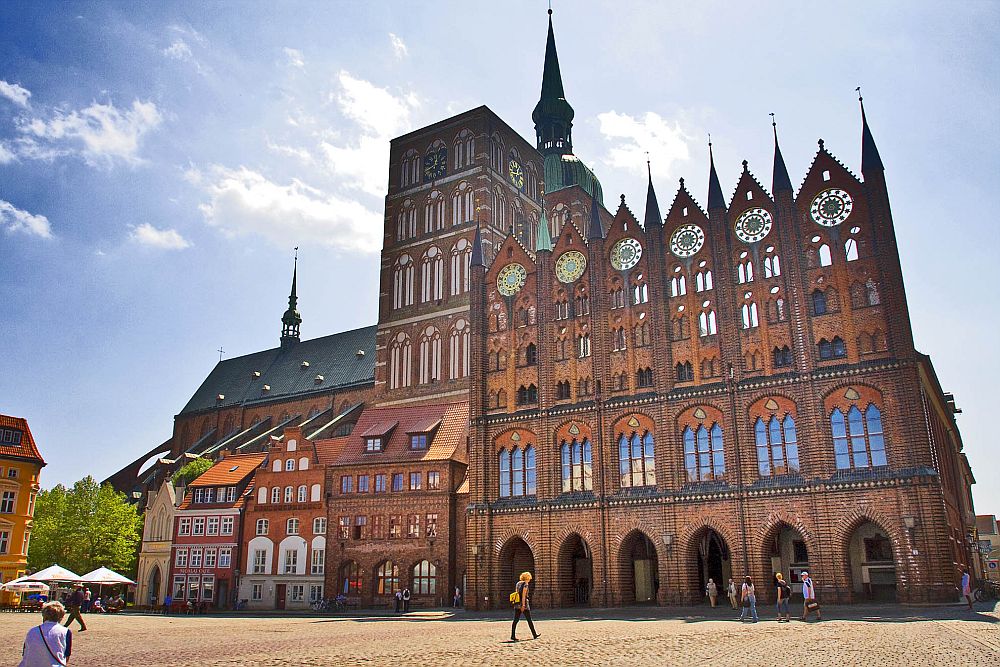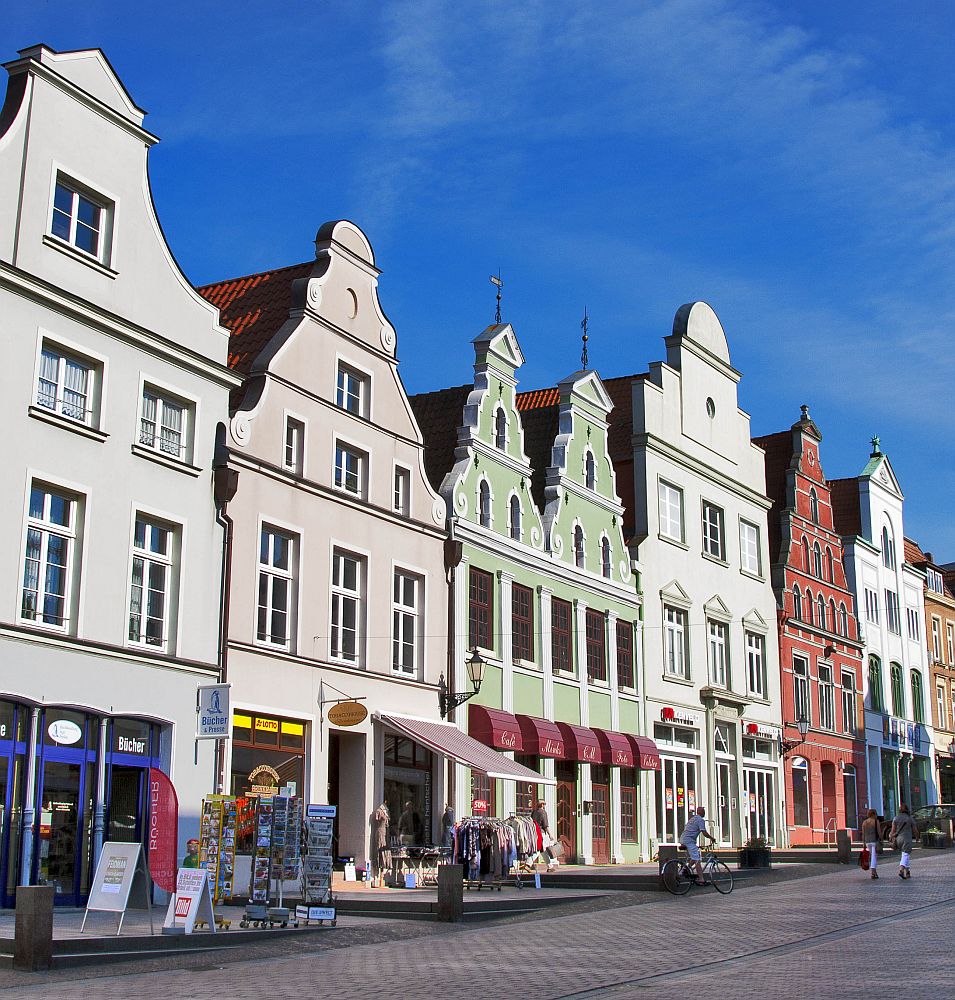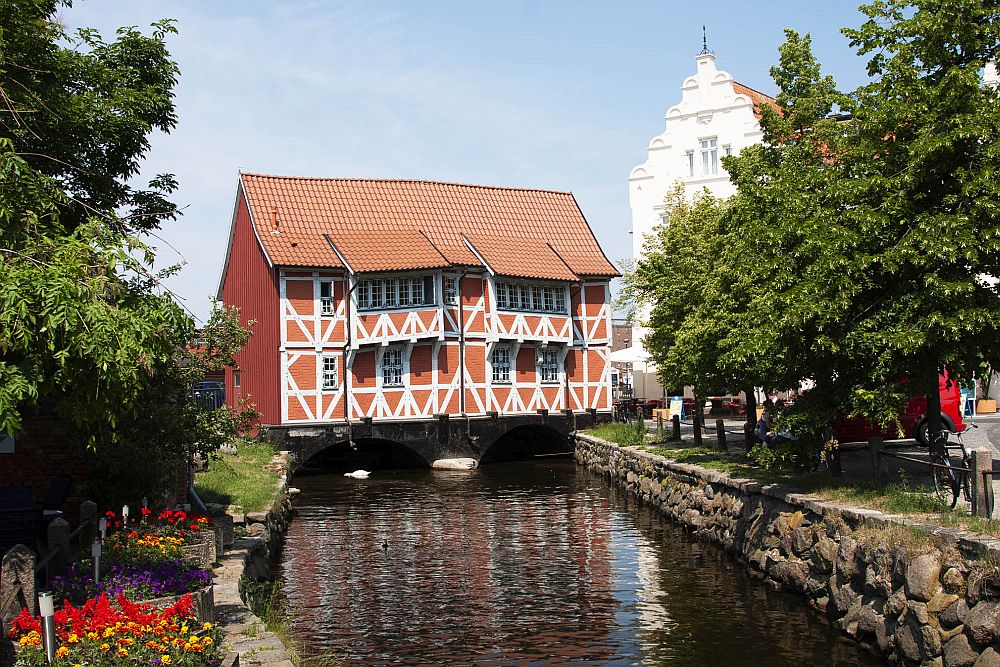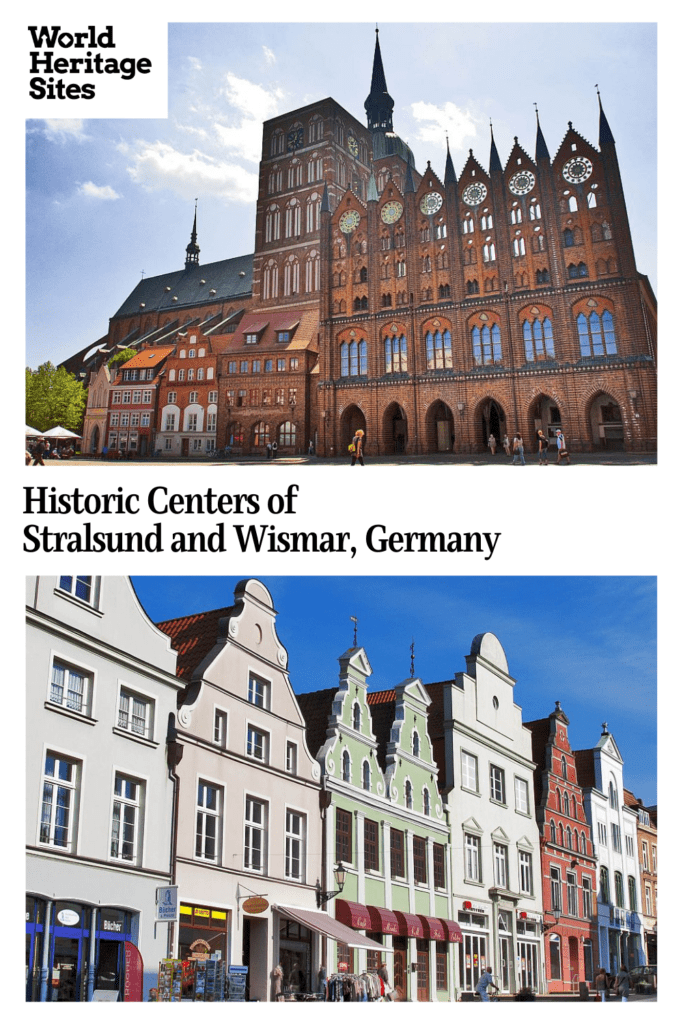Historic Centers of Stralsund and Wismar
By Stillman Rogers
What is Stralsund and Wismar?
During the 13th through the 15th centuries, peoples living along the south coast of the Baltic Sea established a widespread trading system called the Hanseatic League. They developed localized styles of brick-based construction and techniques that are specifically characteristic of the region. These characteristics became typical of all the Hanseatic towns and are best seen in the towns of Stralsund and Wismar, Germany.

Disclosure: This article contains affiliate links. Making a purchase through an affiliate link will mean a small commission for this website. This will not affect your price.
Why are Stralsund and Wismar a UNESCO World Heritage site?
In Wismar and Stralsund much remains of the “Brick Gothic” building style that came to typify the towns of the Hanseatic League. These structures include not only commercial and business structures but also housing and especially religious structures. Both these cities have large original Market Squares bordered by buildings of this Hanseatic style. Each has a wealth of churches that are steeped in the special Hansa style. UNESCO cites these cities’ “crucial importance in the development of the building techniques and urban form that became typical of the Hanseatic trading towns.” In the 17th and 18th centuries, these towns were important Swedish administrative centers as well.

What can you expect on a visit to Stralsund and Wismar?
The architecture of the Hanseatic League in Stralsund and Wismar developed as “Brick Gothic,” quite different from elsewhere in Europe. This shows up in architecture as brick gable ends (glazed and unglazed) that extend to the peak of the roof and often feature decorative details in windows, doorways and spires. In each town, the place to start exploring is the Market Square.
In Stralsund, admire the stunning Town Hall and next to it the magnificent Nikolaiekirche. The medieval sacred art within the church includes works saved from other churches damaged in World War II. Across the square at #5 Alter Markt is the gabled Wulflanhaus and to the left the Dielenhaus. The Museum of Cultural History, in the former St Catherine’s monastery, has exhibits related to the city’s cultural history. A section of the old town walls and the two remaining town gates are along Kneiperwall and at the end on Schillstrasse you can see the Franciscan Cloister. There is much more to see in this beautiful town.
Try this walking tour of Stralsund.
The lively small city of Wismar also has a stunning collection of Hanseatic Brick Gothic architecture. The old harbor, Alten Hafen, remains active and is home to an authentic reconstruction of a Hansa merchant vessel, the Kogge Wismarra. In the Market Square, still used weekly for markets, see the Watertower and the Rathaus. Across the square is the Alte Schwede House, a Hanseatic merchant house from 1380. The square and the streets around it are replete with Hansa style houses. The Brewpub Brauhaus am Lohberg has been there since 1452. The impressive brick St George’s Church dates to the 14th-16th centuries and the 14th-century St Nicholas has the fourth tallest steeple in Germany. The former hospice-almshouse of the 16th-century Helige Gheist Kirche has carved medieval panels and 17th-century ceiling panels.
Here are some activities and tours in Wismar.
Are Stralsund and Wismar worth visiting?
Unlike major cities, Stralsund and Wismar are smaller and easy to navigate, making it possible to admire all the UNESCO-listed buildings in a walking tour. These are the only two cities where you can see so many of these towering brick churches in the Baltic Hansa style. Both are also intimate and welcoming places to visit, and you’ll feel the excitement and pride the residents take in their beautifully preserved landmarks. The people here seem more connected to their special and unique history.

What sorts of travelers would like Wismar and Stralsund?
Stralsund and Wismar are destinations for people who like medieval history and architecture and enjoy learning about the development of European history and culture where it happened. These are a pair of cities that are welcoming to travelers, proud of their heritage and anxious to show it off. They are also port cities with an openness to the outside world.
* Book your accommodation in Stralsund or in Wismar. *
Tips for visiting Wismar and Stralsund
- Streets and sidewalks are brick and cobblestone as well as macadam so comfortable walking shoes are needed.
- These two locations are on the Baltic coast and depending on the season could be cold and wet; dress casually, but for expected weather.
- Be sure to allow some time for Wismar’s harbor, for lunch at one of the boats selling seafood sandwiches.
Other Hanseatic cities to read about:

Where are Wismar and Stralsund?
Stralsund and Wismar are on the north coast of Germany, on the Baltic Sea, in the state of Mecklenberg-Vorpommern. Stralsund is on the eastern side, across the sound from the island of Rugen on Route 105. Wismar is on the northwest corner of the state a bit east of Lübeck on Route 105.
Wismar is about an hour from Lübeck by bus, 90 minutes by train. Stralsund is 3 hours east from Wismar by bus, 2½ hours by train.
For more information, see the official websites of Stralsund and Wismar.
Have you been to Stralsund and/or Wismar? If so, do you have any additional information or advice about this UNESCO World Heritage site? Please add your comments below!
